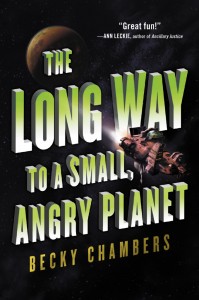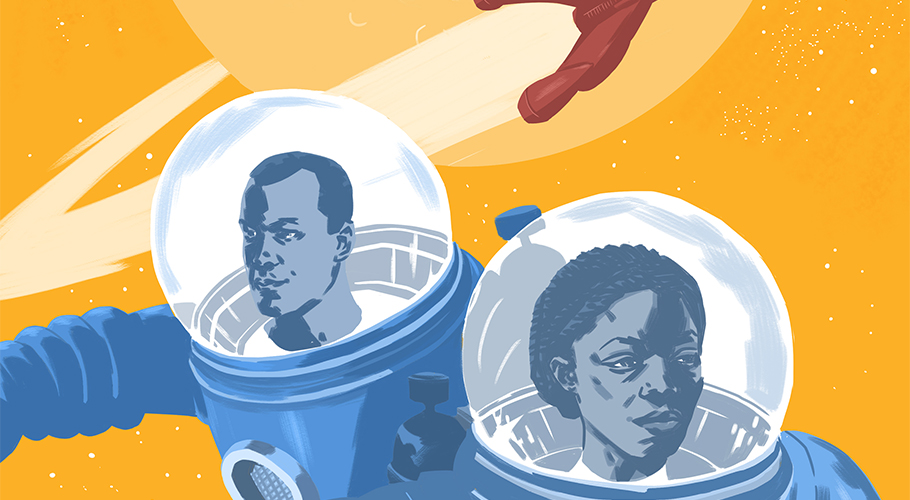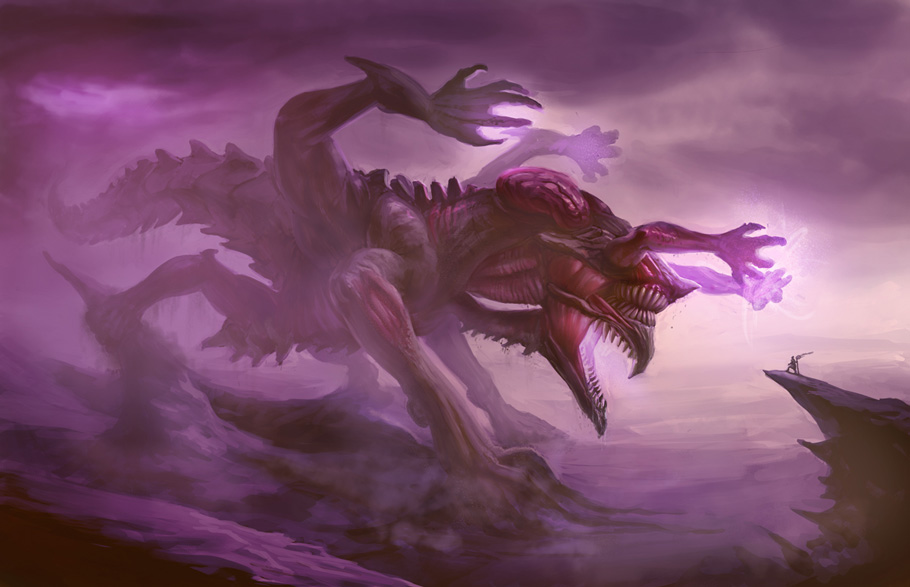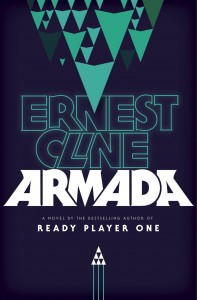As we are currently running the Uncanny Magazine Year Two Kickstarter, here’s a look back at how we accomplished the first one.
The Pithy Version
- Decide you really enjoy spending quality time with spreadsheets.
- Spend 150% more time sending email than you planned. You are now a professional emailer.
- Come up with an awesome mascot as an off-the-cuff joke to your designer.
- Love short SF/F. A lot. To the point of unreasonableness. Recommend and promote the stories you love in other venues for years, so people begin to trust your exquisite taste.
- Make peace with the notion that you will not be up to date on any of the latest TV series or films.
- Develop a stubborn streak (if you don’t have one already).
- Work as a submissions editor, or an associate editor, or just buy an established editor a drink or an appetizer so you can learn more about what they do.
- Learn about taxes.
- Learn about running small businesses.
- Learn about ebook formatting. In a minimum of 3 file types.
- Learn to lie about deadlines to contributors. Always.
- Have a plan B, C, D, and E for when things inevitably fall apart. Probably F, just in case.
- Buy plenty of bourbon and/or chocolate.
- Publish an issue you’re proud of featuring your best work, but always strive to make the next issue even better.
- Another 712 things we’re trying to remember. We know we wrote them down somewhere.
The Less Pithy Version
When we decided to Kickstart our own magazine, Uncanny Magazine, we’d been building up the skills to do it for many years. We had worked as editors on several nonfiction anthologies and Apex Magazine. We felt we knew how to edit a magazine that would be special based on our vision and previous successes (award nominations and increased sales wherever we were). We quite successfully Kickstarted an anthology, Glitter & Mayhem, with John Klima, who had some Kickstarter experience already. We learned a lot about Kickstarter from that project, but it’s always a challenge to move from a one-and-done project model to an ongoing magazine. We talked to magazine editors and publishers about how they did things, including John Joseph Adams, Christie Yant, Neil Clarke, Sheila Williams, C. C. Finlay, Irene Gallo, Julia Rios, and Sonya Taaffe. We talked to authors like Tobias Buckell, who has done some excellent analysis of how to Kickstart a project. Read More »
Previously on “Anatomy of a Sale,” I made my first short story sale and then had no luck for almost five months. But then I made sale after sale after sale, I got an anthology invite, and I was asked to be Assistant Editor of a magazine. Things were happening!
And then nothing happened for a couple months.
Draft 1: 6/5/2014
Draft 2: 1/5/2015
Final (Draft 6): 2/9/2015
Submission: 89
Rejections: 2 (80 lifetime, 2 from this market)
Rewrite Request: 4/20/2015 (30 days)
Resubmission: 4/25/2015
Acceptance: 4/28/2015 (38 days)
Draft 1 to Sale: 327 days
Final to Sale: 78 days
Last June several of us Bay Area writers formed a small community on Twitter, dubbed #baywriters by Christie Yant (who is not in the Bay Area but is generally a positive influence on writers). We organized writing sprints, and one night when we were getting ready to write 1000 words in half an hour, I asked for a prompt. I got this.
Sometimes a bizarre Twitter prompt turns into a silly story about a psychic alligator, and sometimes it turns into an emotionally devastating story about a woman in a post-apocalyptic diner. I cranked out a first draft (826 words) that night.
And then I didn’t touch it for six months. I worked on other projects, but in the back of my head, I knew that I had a viable, compelling piece there that I wanted to revise one day. Normally I don’t wait so long to revise because it can be hard to recapture the voice and the world, and I may have lost my initial grip on the narrative, but I was very pleased to be able to come back to this piece in January and whip it into shape over the course of a month.
“Marcie’s Waffles Is the Best in Town” is my fastest sale since my first, selling on its third time out, and it illustrates what I was saying above about personal rejections. Read More »
On September 12, 2013, I declared in front of God and Facebook that by that time next year, I was going to be a published author. Ten months later, I made my first short story sale (at pro rates), and since then I’ve made eight more, all but one to pro markets. There are a number of factors to which I could attribute my rapid success—one being that I have been writing for decades, I simply had not been submitting to SFF markets, so my craft was fairly well honed by that point—but the most important, in my opinion, was that I received advice from more seasoned writers on how and where to submit. In fact, one reason I even decided to try my hand at becoming published was because the SFF community is so supportive of new authors, and I knew I had a network of people to show me the ropes. And show me they did.
Now, I am hardly seasoned (I just got here! is my constant refrain), but I want to be a knowledge conduit. In this post I will examine each one of my sales and provide statistics and numbers, dissecting the process to extract vital information that you can use in your own career. But more than that, I hope that my experience can be both inspiring and comforting: a bibliography does not tell you how many times a story was rejected, how long a story took to sell from its inception (either idea or first draft), how many submissions the writer made. If you are a new writer, if you are about to begin submitting to magazines, you should be aware of these things. I made my first submission in December 2013, but I did not begin submitting in earnest until March since, well, I didn’t have more things to submit! Since then, however, I’ve been submitting constantly. Come with me as I break down the mystery. Read More »

Via their blog, Harper Voyager announced today that Becky Chambers’ critically-acclaimed science fiction novel, The Long Way to a Small, Angry Planet will be coming to the United States this year. It was acquired by Kelly O’Connor, Assistant Editor at HarperCollins Publishers. Chambers initially self-published The Long Way after a successful Kickstarter campaign, and eventually saw the novel nominated for a Kitschie Award. After that, traditional publishers began to take notice. In addition to Voyager, Hodder & Stoughton is publishing Chambers’ novel in the UK.
“We can’t wait to get this into readers’ hands,” O’Connor told me. “We’ve had The Long Way to a Small, Angry Planet on our radar for some time, and jumped at the chance to publish it again in the US. This story is space opera at its finest, but also so much more! Becky does a fabulous job of touching on important themes like family, diversity, and identity.”
I’m disappointed to see Voyager re-using cover art assets from the self-published release, rather than following Hodder & Stoughton’s lead and producing a new, original cover for the book (I mean, check out the UK cover! Gorgeous!), but a tight production schedule and (initial) digital-only release necessitate some concessions.
Coinciding with Hodder & Stoughton’s hardcover release in the UK, Voyager will release a digital edition of The Long Way to a Small, Angry Planet on August 13th, just a few weeks from now, followed by a paperback release in Summer 2016.
Publisher: Crown -
Pages: 368 -
Buy: Book/eBook
Ernie Cline’s novel Armada dropped last week with an enormous publicity campaign that’s sure to get this book selling exceptionally well. Cline has been riding high on his debut novel, Ready Player One, an Easter-egg infused novel that hit the nerd sweet spot with a hefty dose of references and nostalgia. The problem with Armada is that it’s absolutely, fucking terrible.
The plot is basic. A spacecraft drops by the school of one high school gamer, Zack Lightman, and tells him what absolutely every gamer wants to hear: Aliens are about to attack Earth and a secret military organization has shepherded video games, movies, novels and television shows to help attune humanity into fighting back against the alien invaders. On top of all that, Lightman’s one of the top gamers in the world, and that because of his scores in Armada, he’s one of the last best hopes for humanity. He’s brought to a secret base on the Moon, where he meets his long-lost (and presumed dead) father, who’s helping to oversee the counter attack. Read More »





